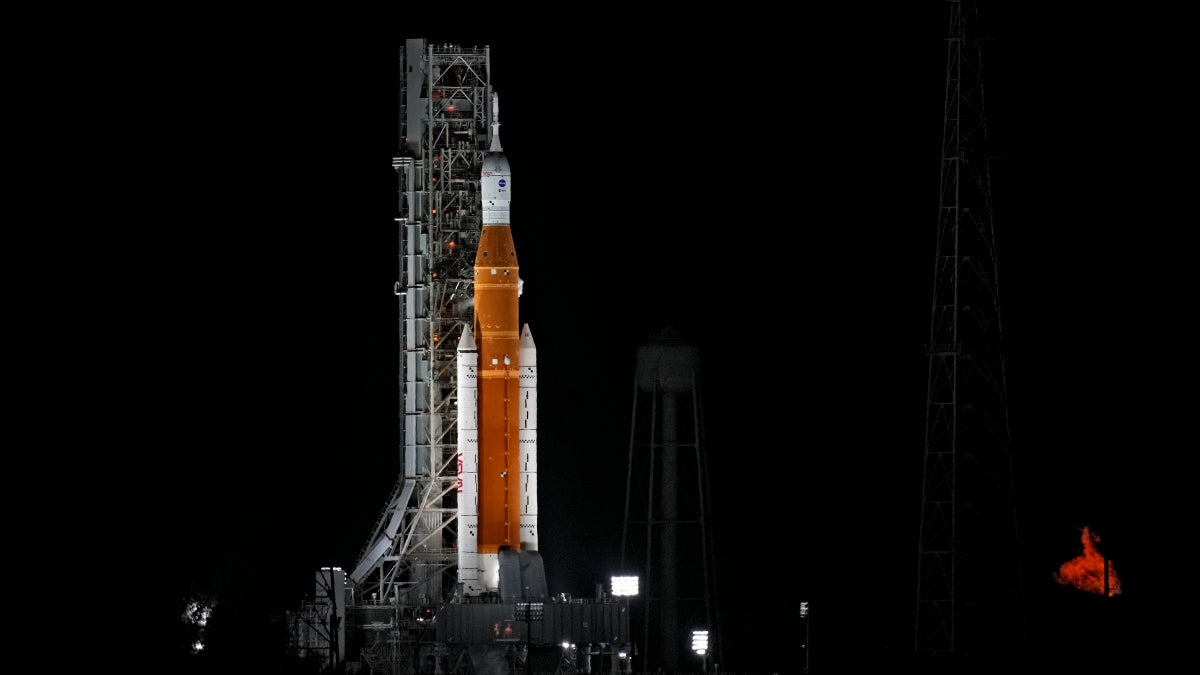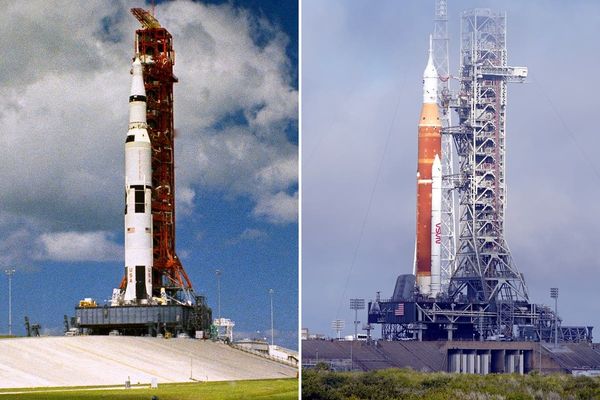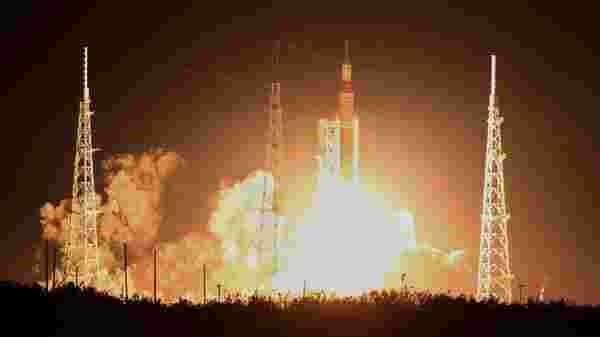
NASA's new moon rocket blasted off on its debut flight with three test dummies aboard early Wednesday, bringing the U.S. a big step closer to putting astronauts back on the lunar surface for the first time since the end of the Apollo program 50 years ago.
If all goes well during the three-week, make-or-break shakedown flight, the rocket will propel an empty crew capsule into a wide orbit around the moon, and then the capsule will return to Earth with a splashdown in the Pacific in December.
After years of delays and billions in cost overruns, the Space Launch System rocket thundered skyward, rising from Kennedy Space Center on 8.8 million pounds (4 million kilograms) of thrust and hitting 100 mph (160 kph) within seconds. The Orion capsule was perched on top, ready to bust out of Earth orbit toward the moon not quite two hours into the flight.
The moonshot follows nearly three months of vexing fuel leaks that kept the rocket bouncing between its hangar and the pad. Forced back indoors by Hurricane Ian at the end of September, the rocket stood its ground outside as Nicole swept through last week with gusts of more than 80 mph (130 kph). Although the wind peeled away a 10-foot (3-meter) strip of caulking high up near the capsule, managers gave the green light for the launch.
NASA expected 15,000 to jam the launch site, with thousands more lining the beaches and roads outside the gates, to witness NASA’s long-awaited sequel to Project Apollo, when 12 astronauts walked on the moon from 1969 and 1972. Crowds also gathered outside NASA centers in Houston and Huntsville, Alabama, to watch the spectacle on giant screens.
“For the Artemis generation, this is for you,” launch director Charlie Blackwell-Thompson said shortly before liftoff, referring to young people who were not alive for Apollo.
The liftoff marked the start of NASA’s Artemis lunar-exploration program, named after Apollo’s mythological twin sister. The space agency is aiming to send four astronauts around the moon on the next flight, in 2024, and land humans there as early as 2025.
The 322-foot (98-meter) SLS is the most powerful rocket ever built by NASA, with more thrust than either the space shuttle or the mighty Saturn V that carried men to the moon. A series of hydrogen fuel leaks plagued the summertime launch attempts as well as countdown tests. A fresh leak erupted at a new location during Tuesday night's fueling, but an emergency team managed to tighten the faulty valve on the pad. Then a U.S. Space Force radar station went down, resulting in another scramble, this time to replace an ethernet switch.
Orion should reach the moon by Monday, more than 230,000 miles (370,000 kilometers) from Earth. After coming within 80 miles (130 kilometers) of the moon, the capsule will enter a far-flung orbit stretching about 40,000 miles (64,000 kilometers) beyond.
The $4.1 billion test flight is set to last 25 days, roughly the same as when crews will be aboard. The space agency intends to push the spacecraft to its limits and uncover any problems before astronauts strap in. The mannequins — NASA calls them moonequins — are fitted with sensors to measure such things as vibration, acceleration and cosmic radiation.
"There’s a fair amount of risk with this particular initial flight test,” said mission manager Mike Sarafin.
The rocket was supposed to have made its dry run by 2017. Government watchdogs estimate NASA will have spent $93 billion on the project by 2025.
Ultimately, NASA hopes to establish a base on the moon and send astronauts to Mars by the late 2030s or early 2040s.
But many hurdles still need to be cleared. The Orion capsule will take astronauts only to lunar orbit, not the surface.
NASA has hired Elon Musk’s SpaceX to develop Starship, the 21st-century answer to Apollo's lunar lander. Starship will carry astronauts back and forth between Orion and the lunar surface, at least on the first trip in 2025. The plan is to station Starship and eventually other companies' landers in orbit around the moon, ready for use whenever new Orion crews pull up.
Reprising an argument that was made during the 1960s, Duke University historian Alex Roland questions the value of human spaceflight, saying robots and remote-controlled spacecraft could get the job done more cheaply, efficiently and safely.
“In all these years, no evidence has emerged to justify the investment we have made in human spaceflight — save the prestige involved in this conspicuous consumption,” he said.
NASA is waiting until this test flight is over before introducing the astronauts who will be on the next one and those who will follow in the bootsteps of Apollo 11′s Neil Armstrong and Buzz Aldrin.
Most of NASA's corps of 42 active astronauts and 10 trainees were not even born yet when Apollo 17 moonwalkers Gene Cernan and Harrison Schmitt closed out the era, 50 years ago next month.
“We are jumping out of our spacesuits with excitement," astronaut Christina Koch, 43, said just hours before liftoff. After a nearly yearlong space station mission and all-female spacewalk, she's on NASA's short list for a lunar flight.










